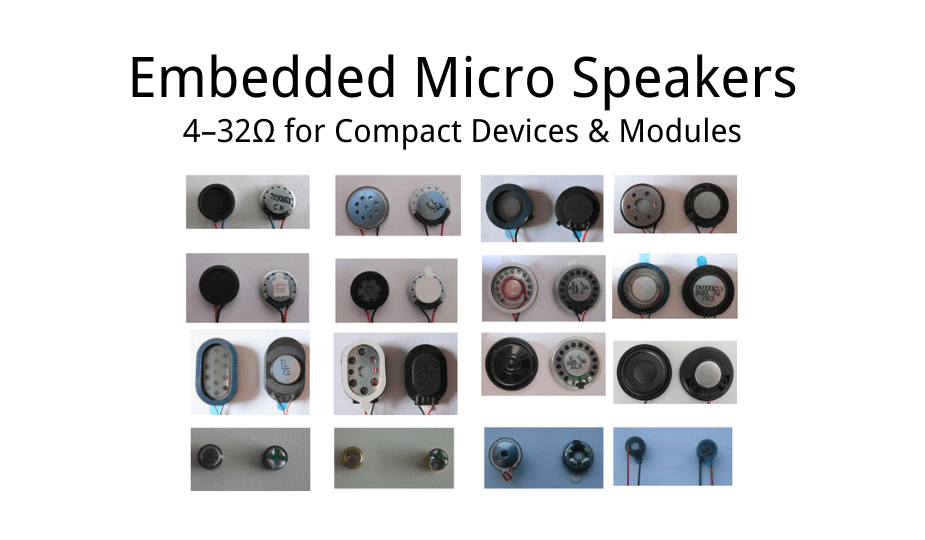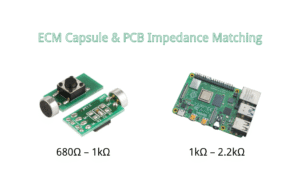
Selecting the right impedance is crucial for optimal audio performance, power efficiency, and reliable operation with your amplifier or audio IC. This guide covers the characteristics of common micro speaker impedances and provides practical guidance for choosing the best option for your product.
Why Impedance Matters
Speaker impedance determines how a speaker interacts with an amplifier or driver circuit. In simple terms, lower impedance requires higher current for the same voltage, typically resulting in higher SPL. Higher impedance requires less current and is often used in voltage-driven systems or long-line transmission, common in industrial and embedded applications.
Our Common Micro Speaker Impedance Range
ECMIC offers micro speakers across the low-to-mid impedance range: 4Ω, 6Ω, 8Ω, 16Ω, 20Ω, 30Ω, 32Ω. These cover most embedded and industrial applications where direct-drive amplifiers or audio ICs are used.
| Impedance (Ω) | Characteristics | Typical Applications |
|---|---|---|
| 4Ω / 6Ω / 8Ω | Low impedance — higher current, higher SPL potential | Portable devices, Bluetooth modules, smart home products, car audio modules |
| 16Ω / 20Ω | Balanced between output level and efficiency | Tablets, laptops, voice modules, compact embedded audio systems |
| 30Ω / 32Ω | Higher impedance within mini range — lower current draw | Earphones, wearable devices, battery-powered voice units |
How to Choose the Right Impedance for Your Product
- Check the amplifier or audio IC specification. Match speaker impedance or ensure the driver can handle the lower load.
- Consider power and battery constraints. Battery-powered devices often favor higher impedance to save current.
- Decide on target loudness (SPL). Lower impedance typically enables higher SPL for the same amplifier capability.
- Account for cable length and multiple speakers. Long runs or many parallel loads benefit from higher impedance or transformer coupling.
- Tip: When multiple speakers are connected in parallel, effective impedance drops — verify total load to avoid amplifier stress.
High-Impedance Options (600Ω–1000Ω)
In addition to the standard 4Ω–32Ω range, high-impedance speakers (600Ω–1000Ω) are sometimes required for industrial and specialized communication products. They are voltage-driven, often via transformers, to reduce line current and maintain compatibility with existing systems.
If your project requires 600Ω–1000Ω micro speakers, options include:
- Using a transformer-coupled solution with a standard low-impedance speaker
- Ordering a custom high-impedance receiver designed to match the specific line or transformer
Common Mistakes to Avoid
- Connecting a low-impedance speaker directly to a voltage-driven high-impedance output — results in very low volume.
- Driving a very low impedance speaker from an amplifier that cannot supply sufficient current — results in distortion or amplifier overheating.
- Ignoring total load when paralleling multiple speakers — confirm the net impedance remains within amplifier limits.
Following these guidelines helps avoid performance issues and ensures reliable operation of your micro speaker within your product.
Need help selecting the right micro speaker for your product? Provide your amplifier or audio IC specs and intended application, and our engineering team will recommend the optimal impedance and model.


